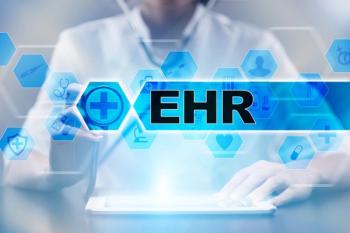
The importance of collectively reading law addressing similar subject matter
Think HIPAA is the only law that matters for patient data privacy? Think again —mapping the complex legal web every physician and practice manager must understand to truly stay compliant.
I can still remember the first time that I heard the phrase in pari materia – a Latin phrase meaning “on the same subject.” (BLACK’S LAW DICTIONARY 911 (10th ed. 2009)). I was attending my Health Law class at Vanderbilt and the topics of the Anti-Kickback Statute (AKS) and the Physician Self-Referral Law (Stark) were being taught by a law school professor, who to this day is still one of my favorite professors and remains a mentor of mine.
As many persons involved in health care know both the
Where else does the doctrine of in pari materia arise in health care and should prompt persons to read more than one statute because they are centered around the same subject or conduct? Health data privacy and security!
A common trap that organizations fall into is only focusing solely on the Health Insurance Portability and Accountability Act of 1996, Pub. L. 104-191 (Aug. 21, 1996) (HIPAA) and the related Privacy Rule, Security Rule and Breach Notification Rule, as well as related updates to these rules (i.e., Final Omnibus Rule 78 Fed. Reg. 5566 (Jan. 25, 2013)) (collectively “HIPAA Rules”). Not considering similar state laws (i.e., Texas HB 300 (Sept. 2012), the Federal Trade Commission’s (FTC) Health Breach Notification Rule (HBNR), 16 CFR Part 318, which was promulgated as directed by Congress in the Health Information Technology for Economic and Clinical Health Act, Pub. L. 111-5 (Feb. 2009) (HITECH Act), the Federal Trade Commission Act (FTC Act) can lead to a false sense of security that other government agencies – whether state or federal – do not have authority to enforce health information privacy and security breaches. They do indeed.
What follows is a roadmap of what laws to read in conjunction with each other in order to glean the complete scope of complying with health data privacy and security requirements.
First, the type of health data must be ascertained. Pursuant to
- Health information under HIPAA means “any information, including genetic information, whether oral or recorded in any form or medium, that: (1) [i]s created or received by a health care provider, health plan, public health authority, employer, life insurer, school or university, or health care clearinghouse; and (2) [r]elates to the past, present, or future physical or mental health or condition of an individual; the provision of health care to an individual; or the past, present, or future payment for the provision of health care to an individual.” By way of contrast, the
FTC’s interpretation of “Health information” is broader and “includes more than treatments and diagnoses. Rather, it’s anything that conveys information or enables an inference about a consumer’s health. For example, browsing information, location information (e.g., data showing a consumer visited a cancer center) or purchase information (e.g., data showing a consumer purchased a home pregnancy test) can convey health information. To avoid violating the FTC Act, take a broad view of what constitutes health data and handle it accordingly.” (emphasis added). - PHI means individually identifiable health information that is: (i) Transmitted by electronic media; (ii) Maintained in electronic media; or (iii) Transmitted or maintained in any other form or medium. PHI excludes, individually identifiable health information: (i) [i]n education records covered by the Family Educational Rights and Privacy Act, as amended, 20 U.S.C. 1232g; (ii) [i]n records described at 20 U.S.C. 1232g(a)(4)(B)(iv); (iii) [i]n employment records held by a covered entity in its role as employer; and (iv) [r]egarding a person who has been deceased for more than 50 years.
Additionally , DODM 6025.18 and DODI 6025.18 excludes information that has been de-identified in accordance with the HIPAA Privacy Rule. - IIHI means information that is a subset of
health information , including demographic information collected from anindividual , and: (1) Is created or received by ahealth care provider ,health plan ,employer , orhealth care clearinghouse ; and (2) Relates to the past, present, or future physical or mental health or condition of anindividual ; the provision ofhealth care to anindividual ; or the past, present, or future payment for the provision ofhealth care to anindividual ; and(i) That identifies theindividual ; or (ii) With respect to which there is a reasonable basis to believe the information can beused to identify theindividual .
Newsletter
Optimize your practice with the Physicians Practice newsletter, offering management pearls, leadership tips, and business strategies tailored for practice administrators and physicians of any specialty.










